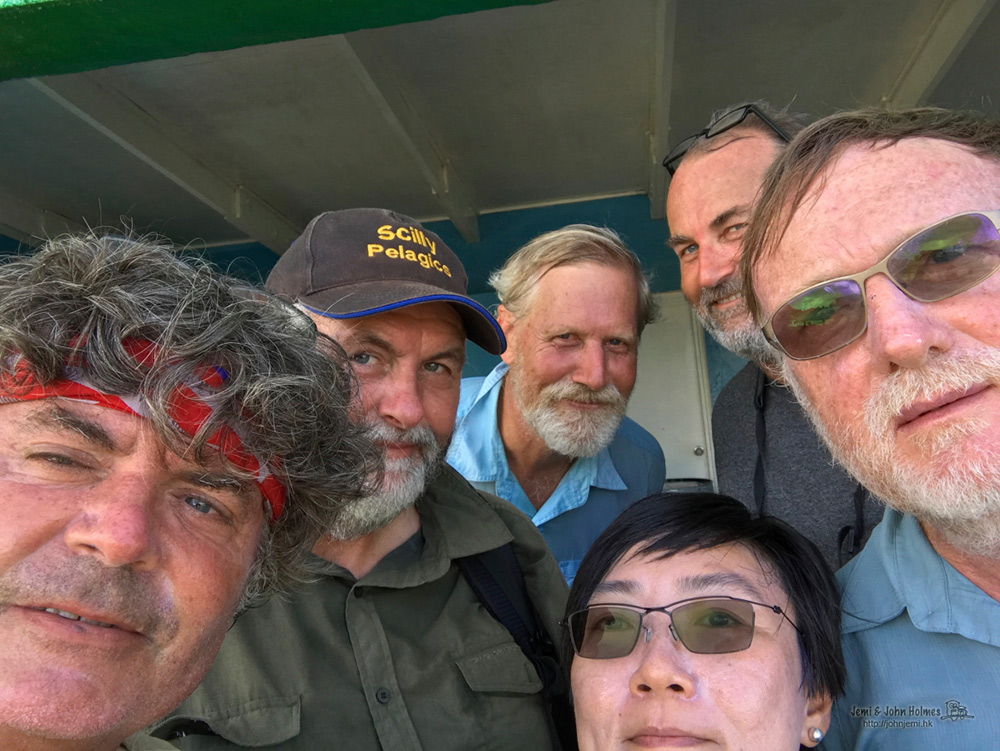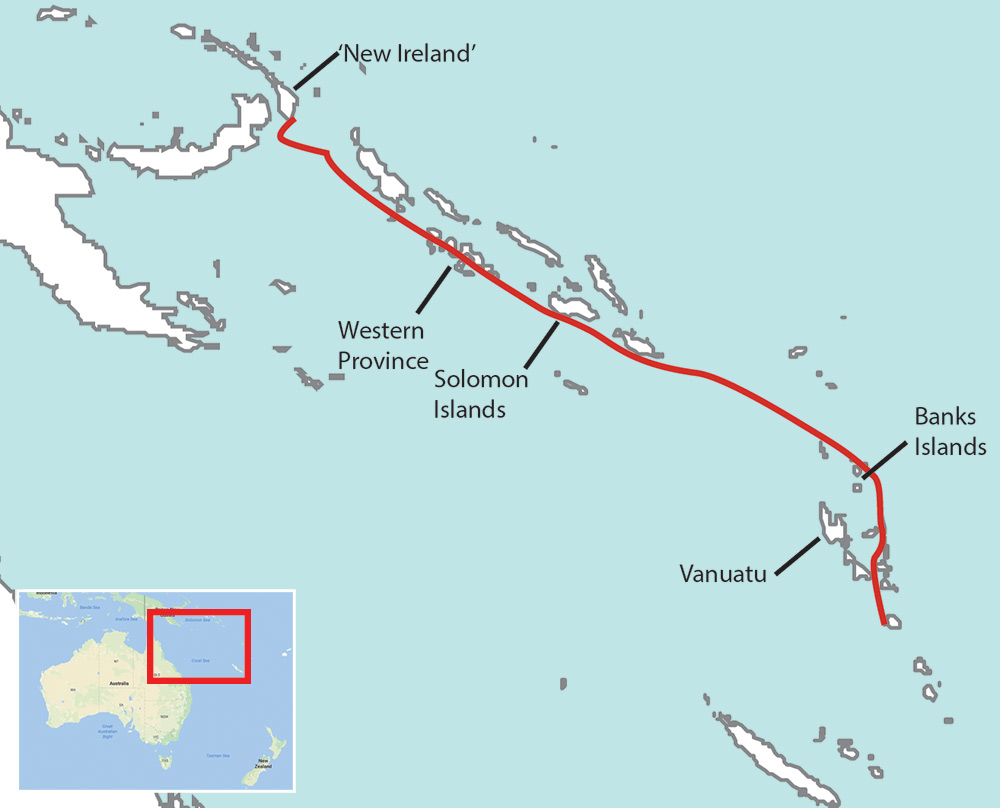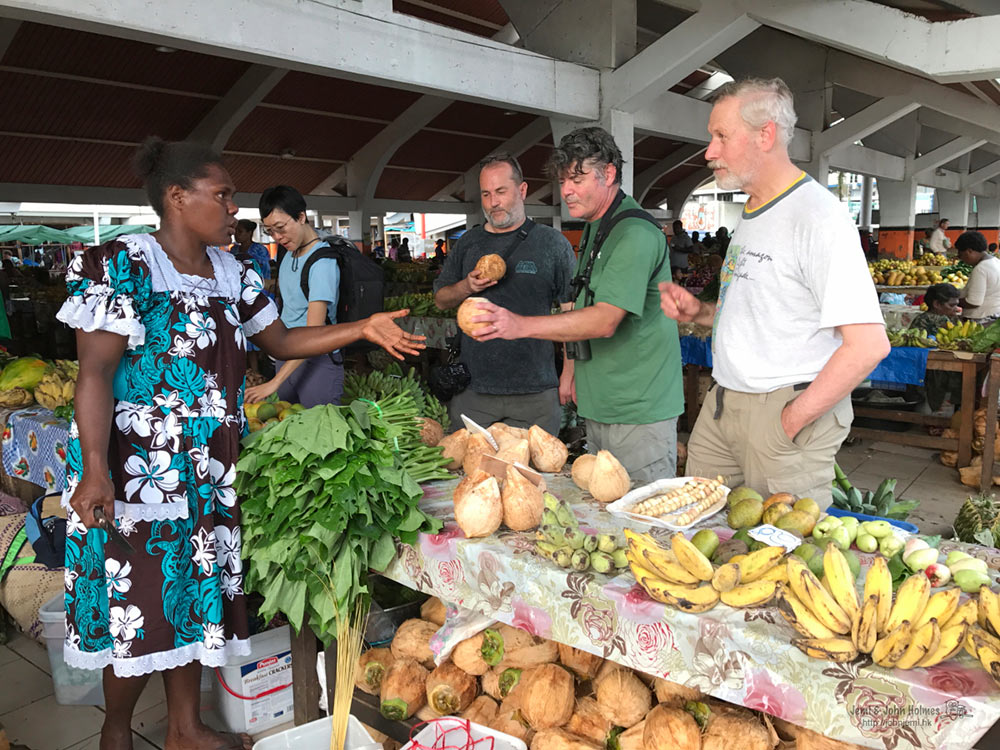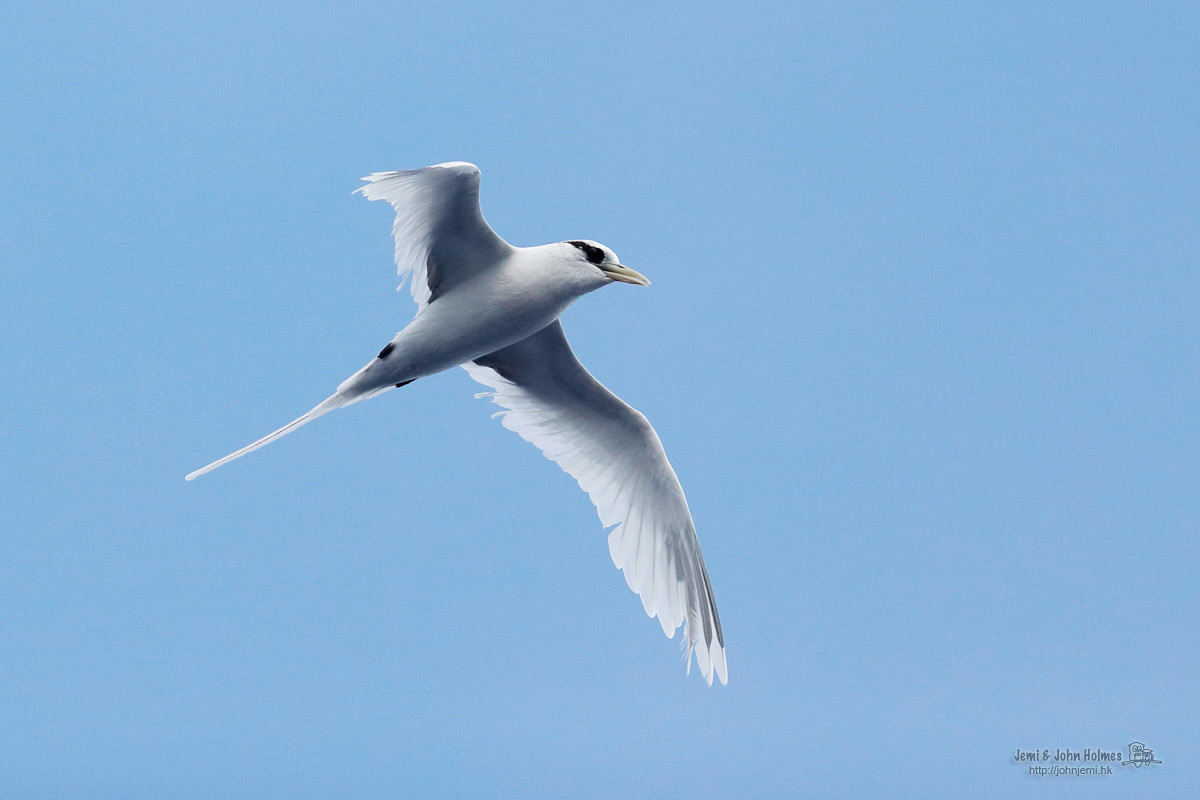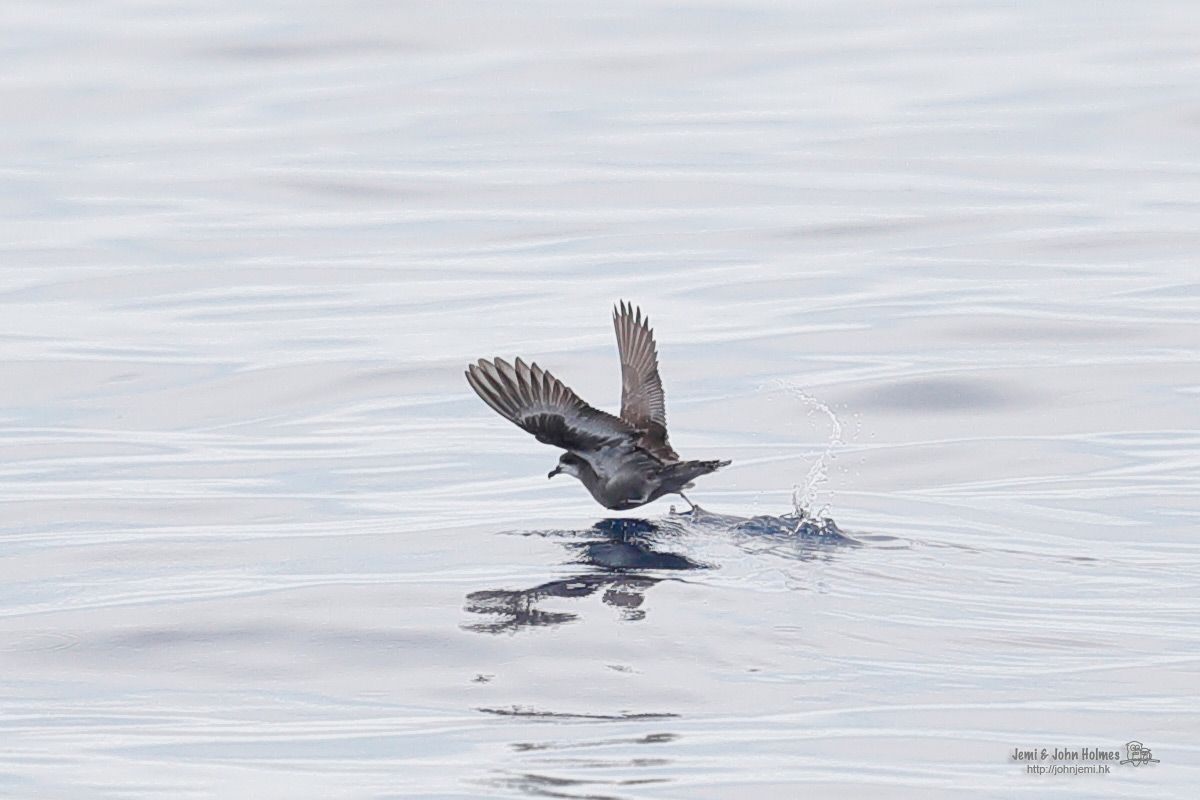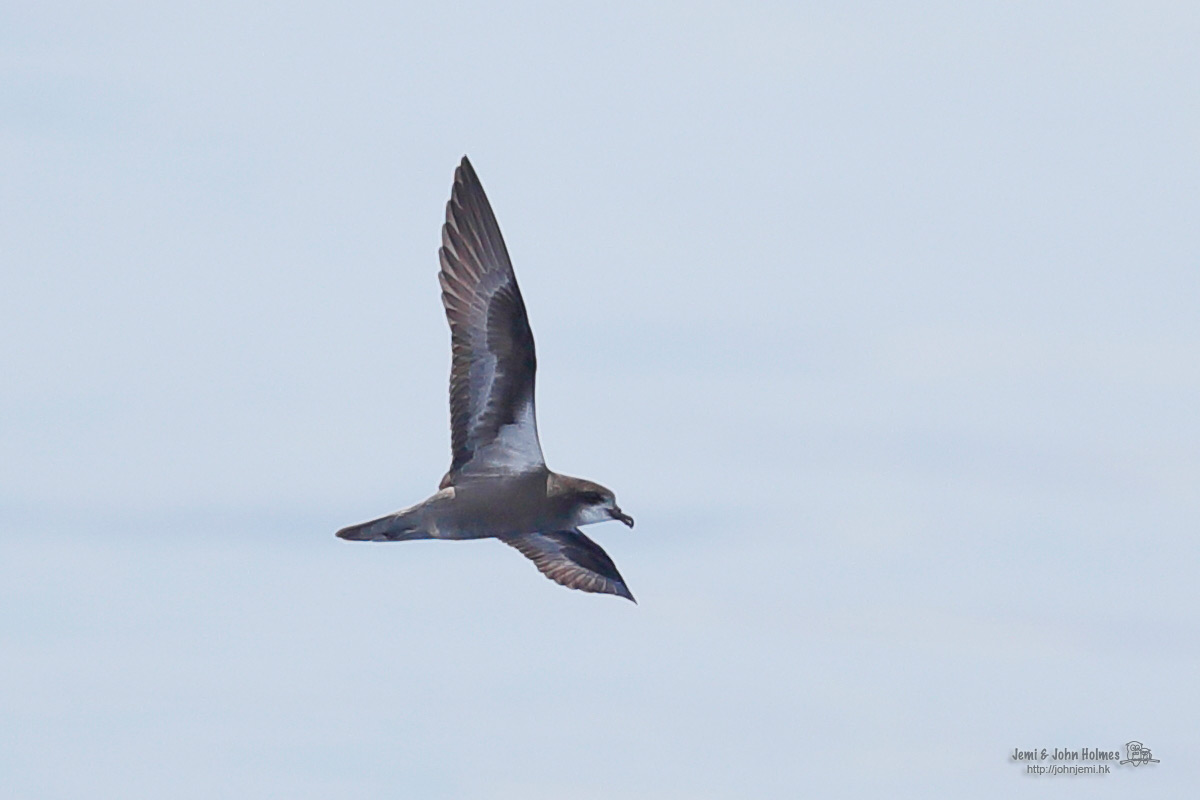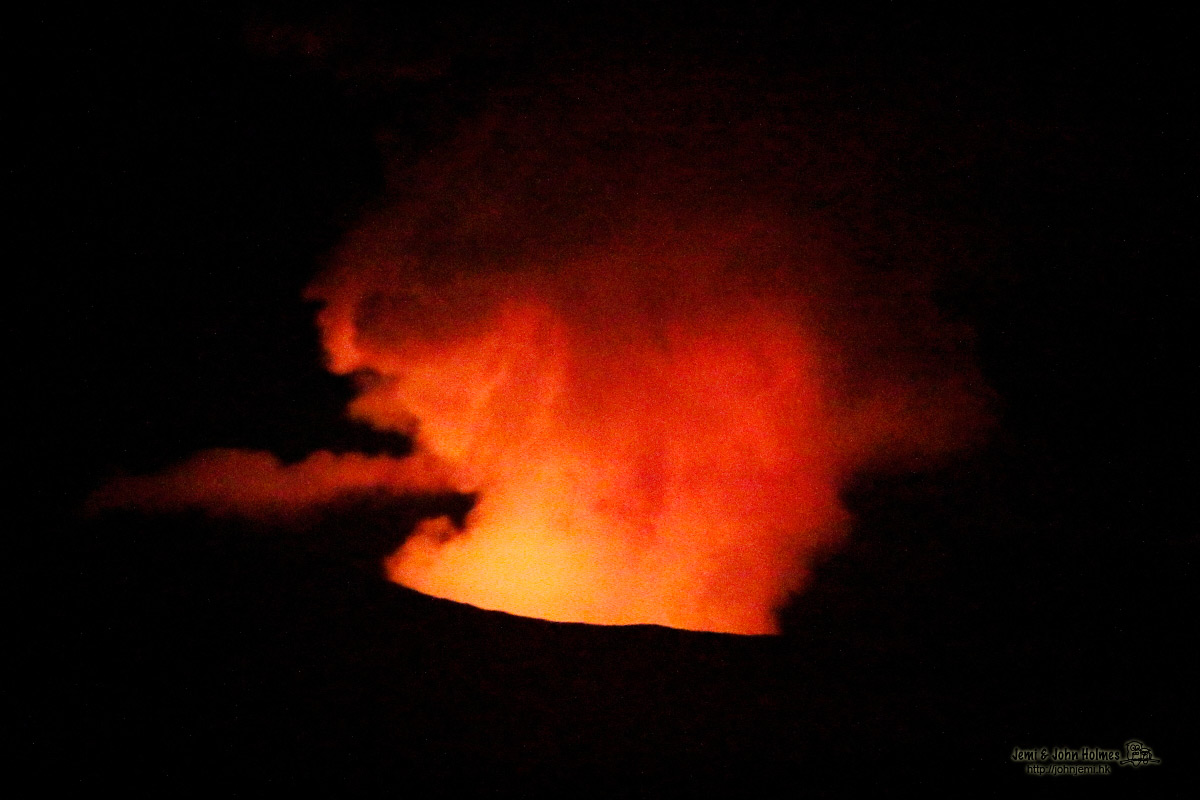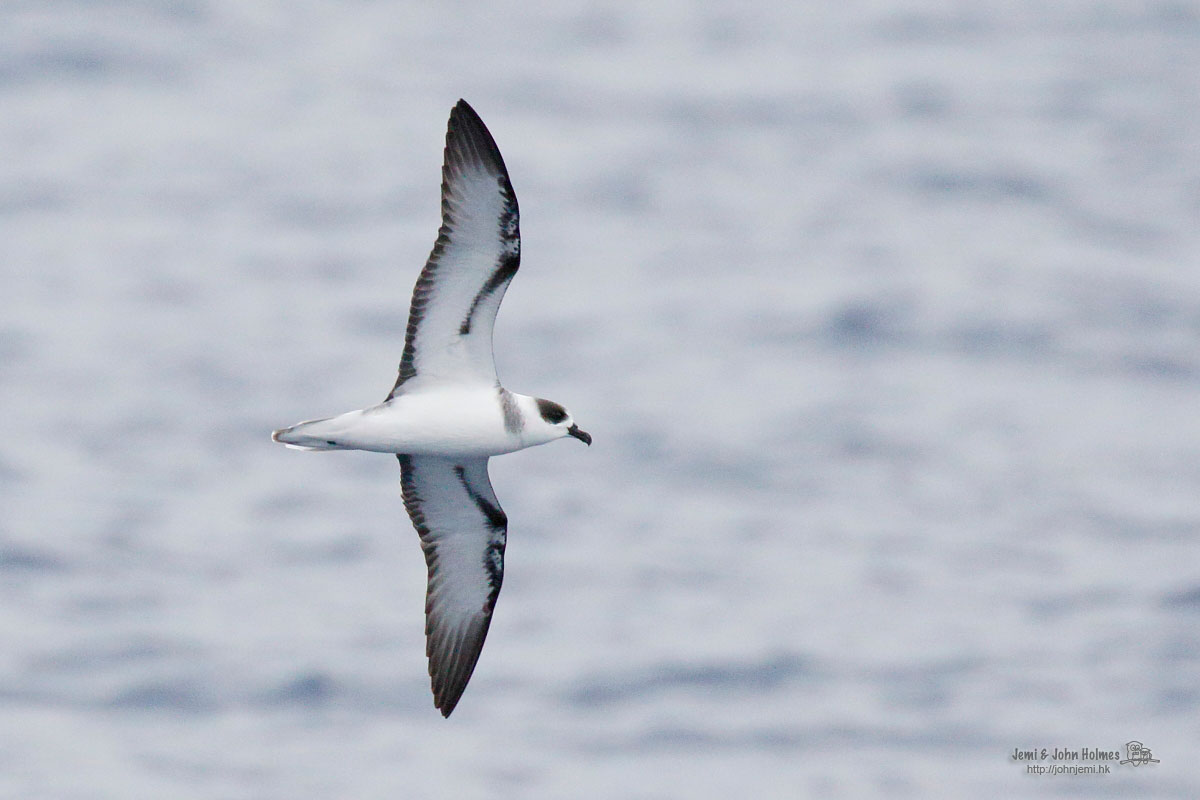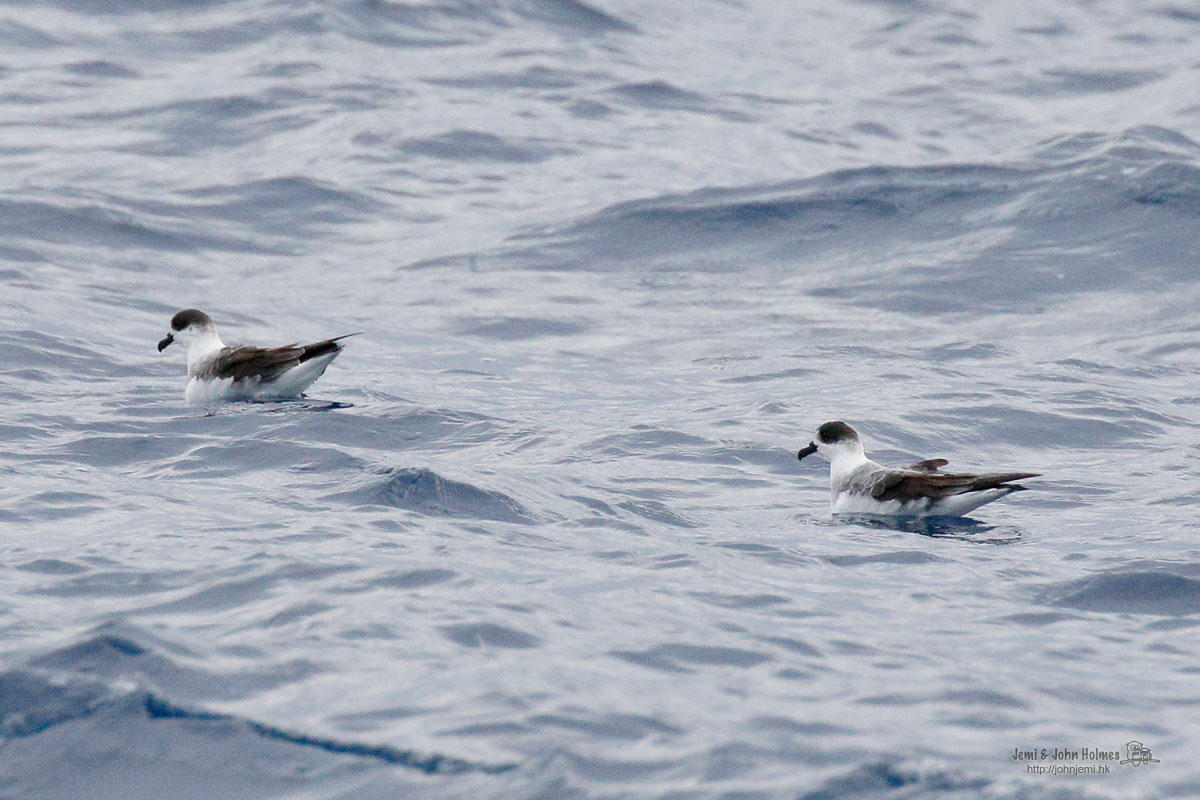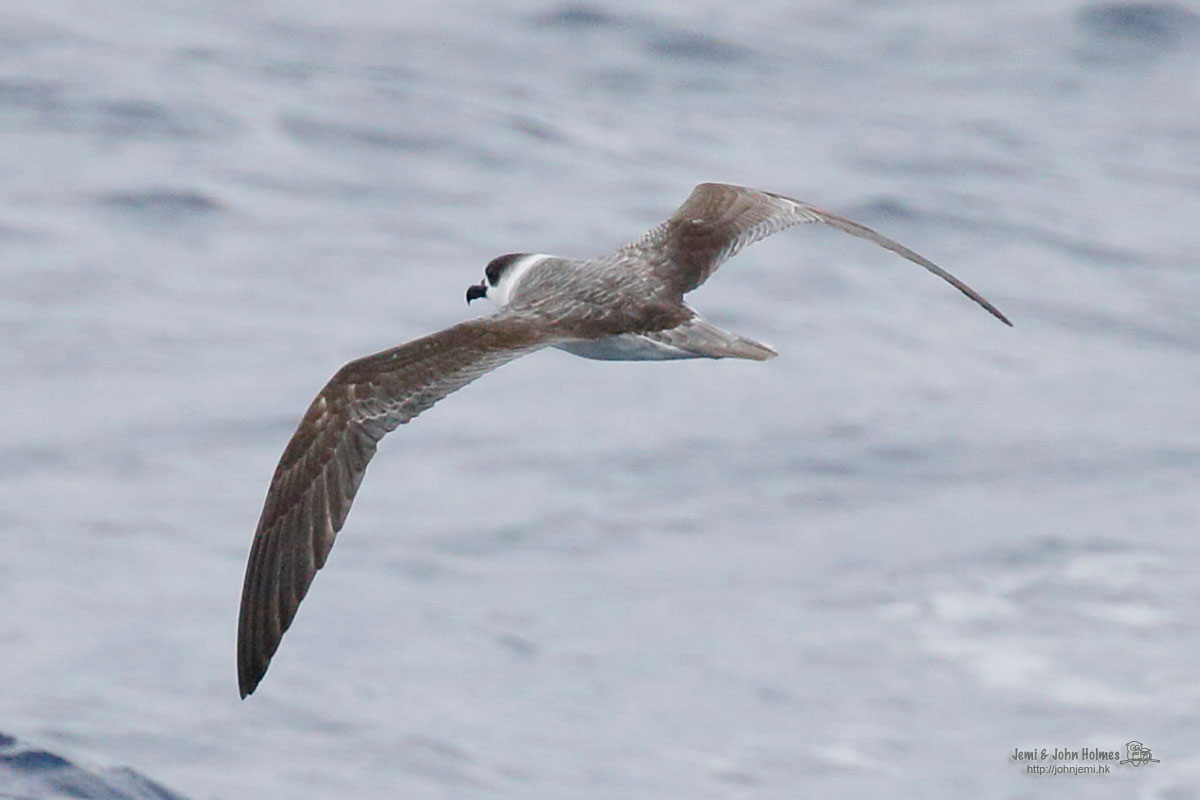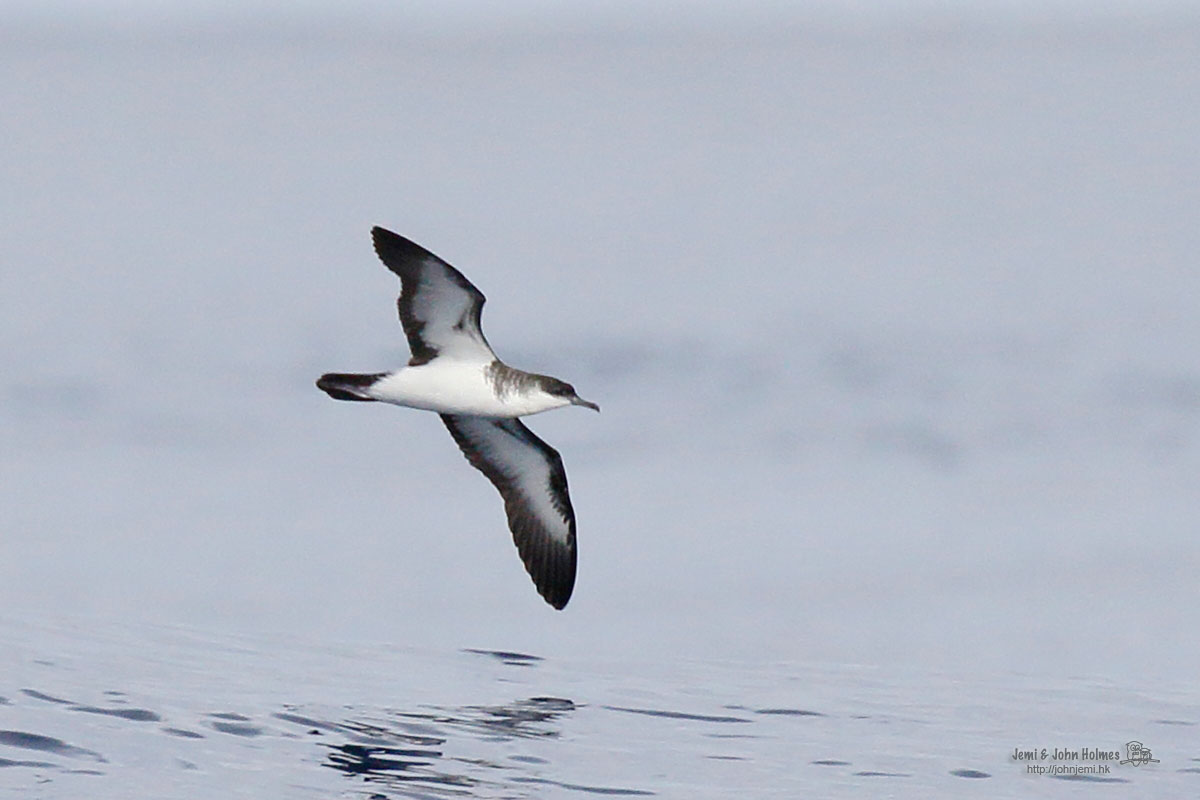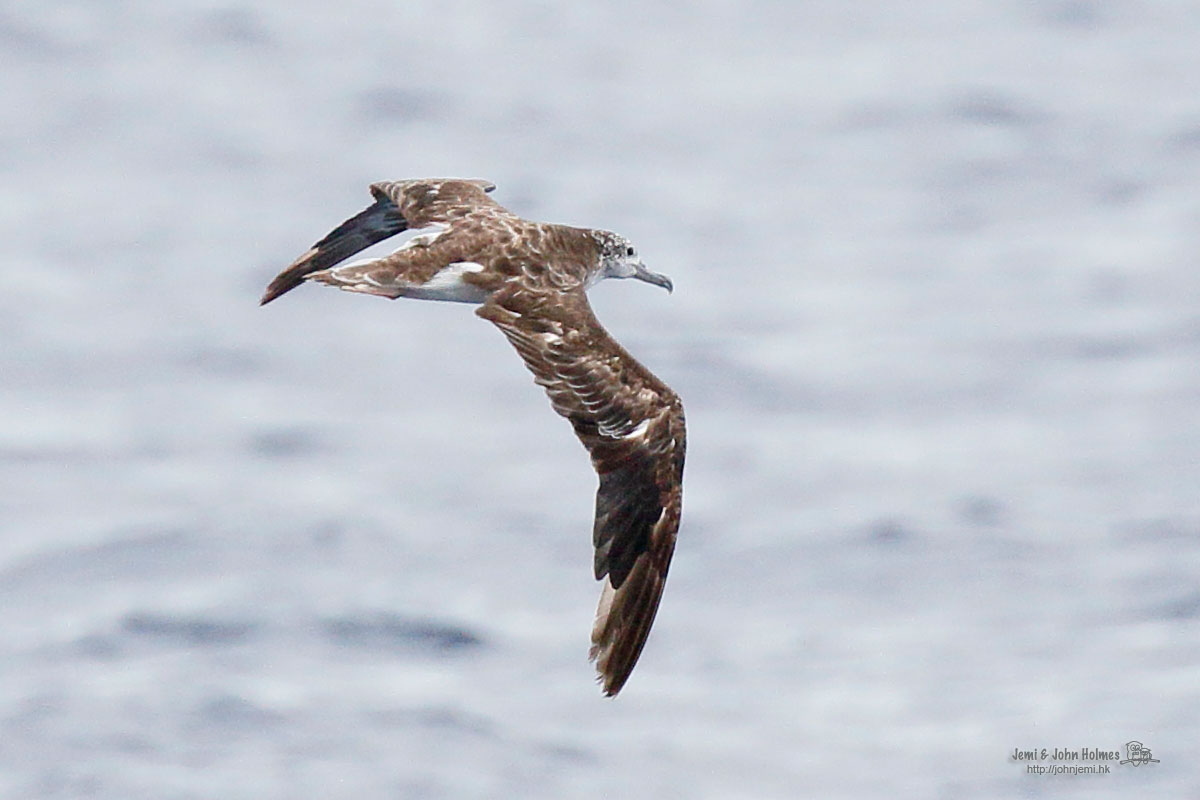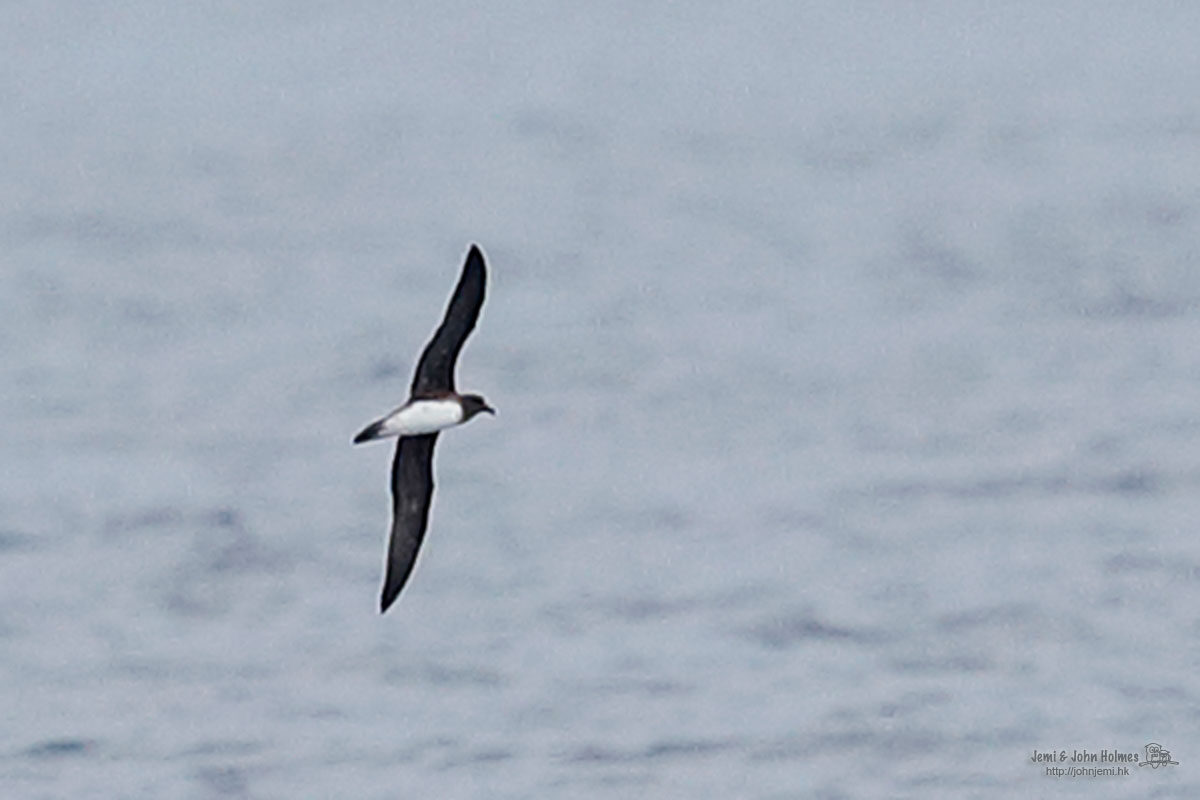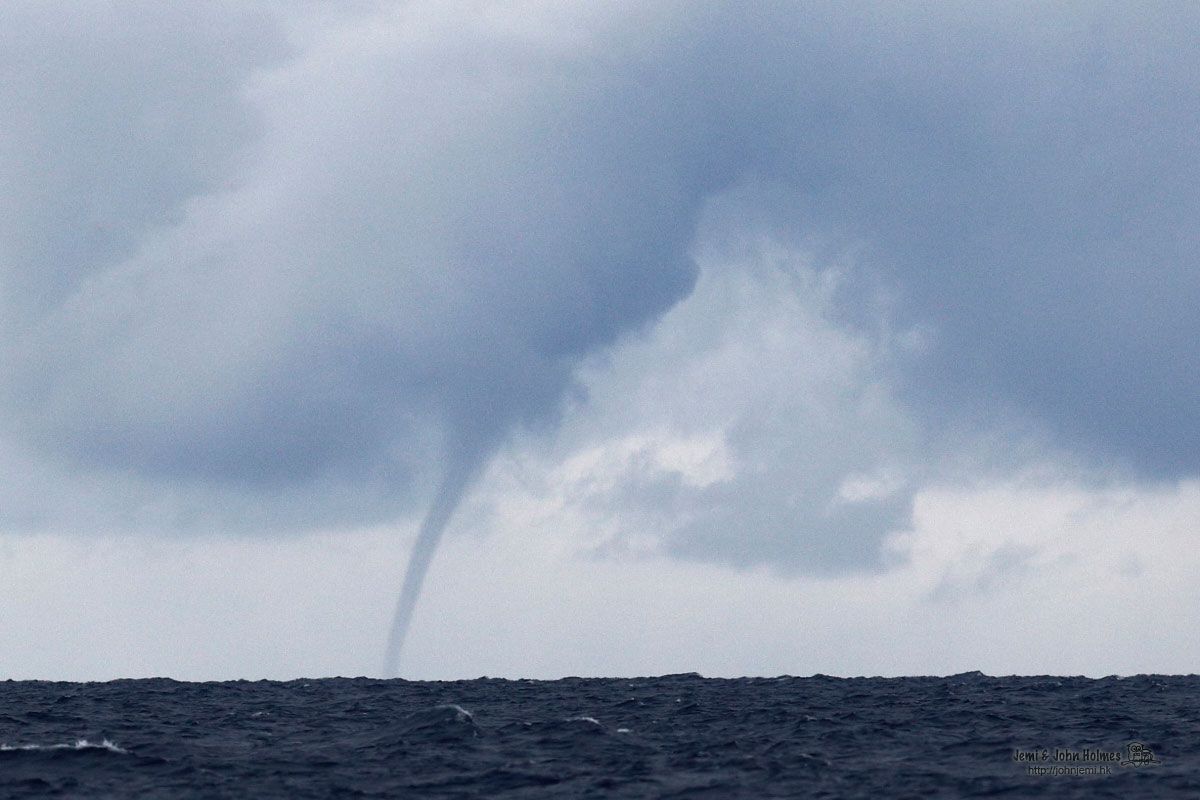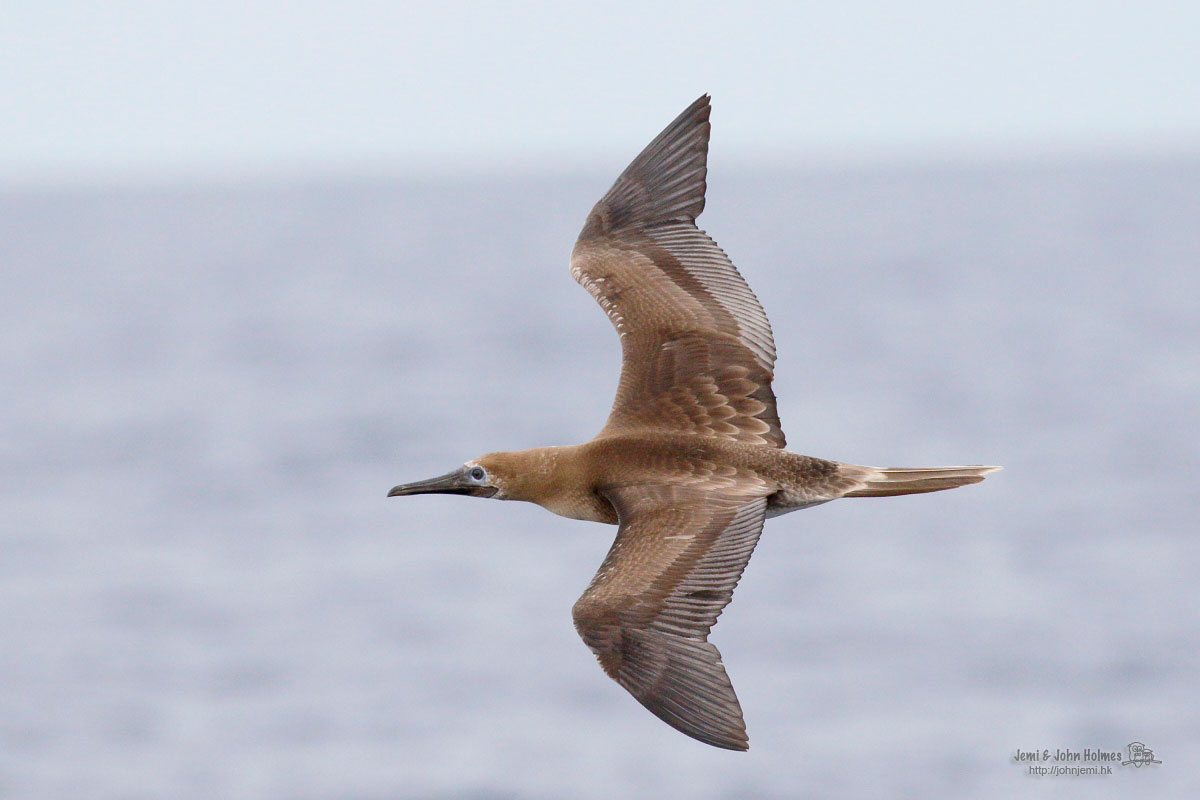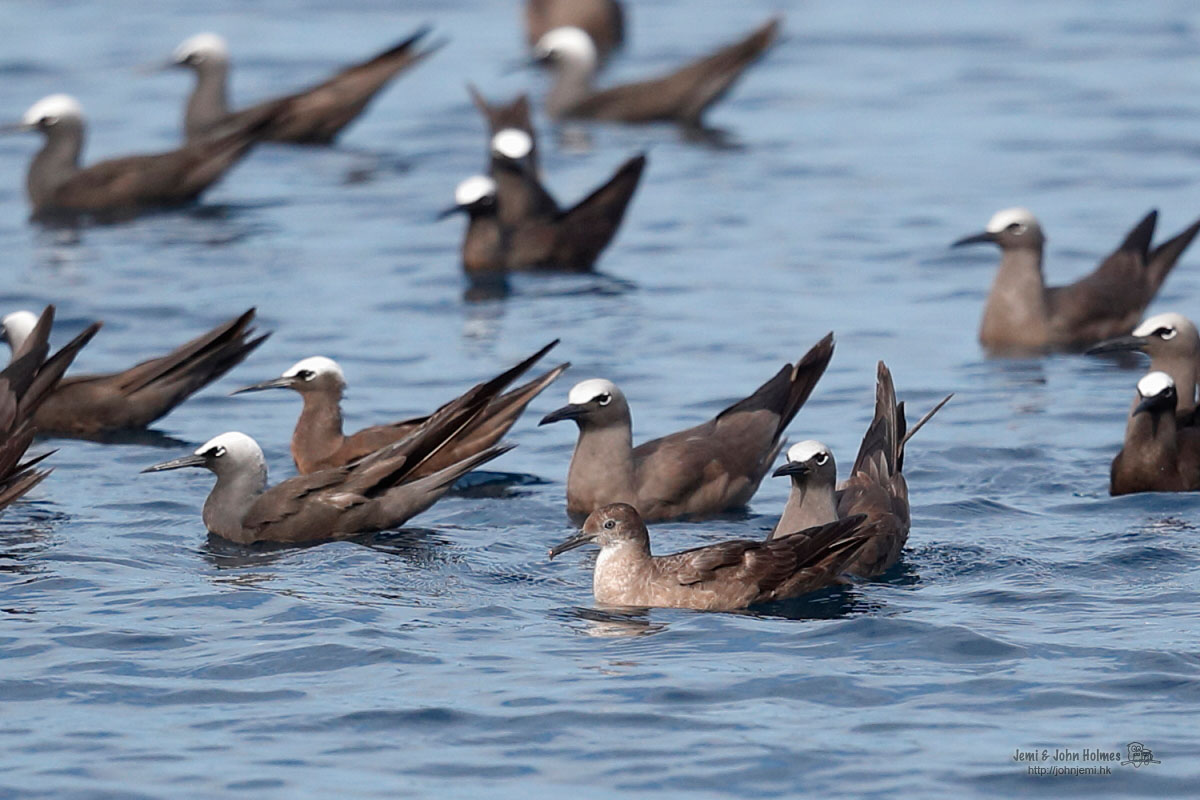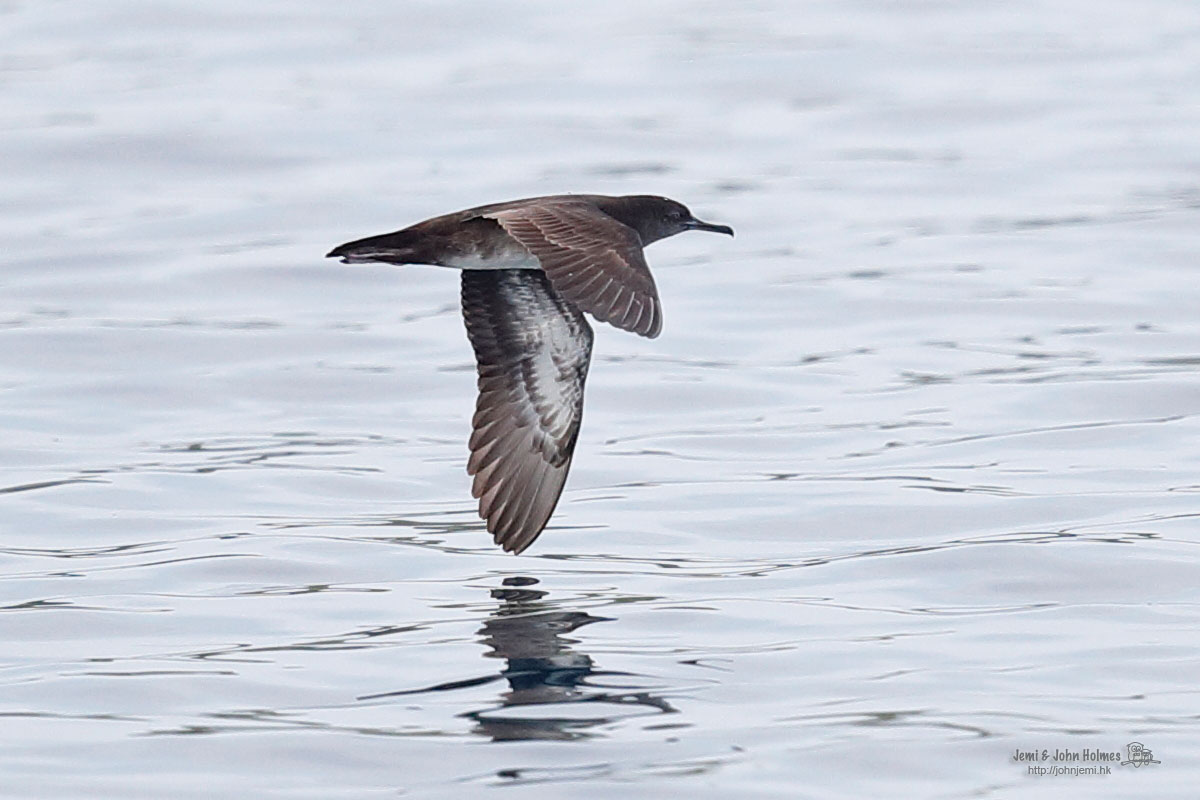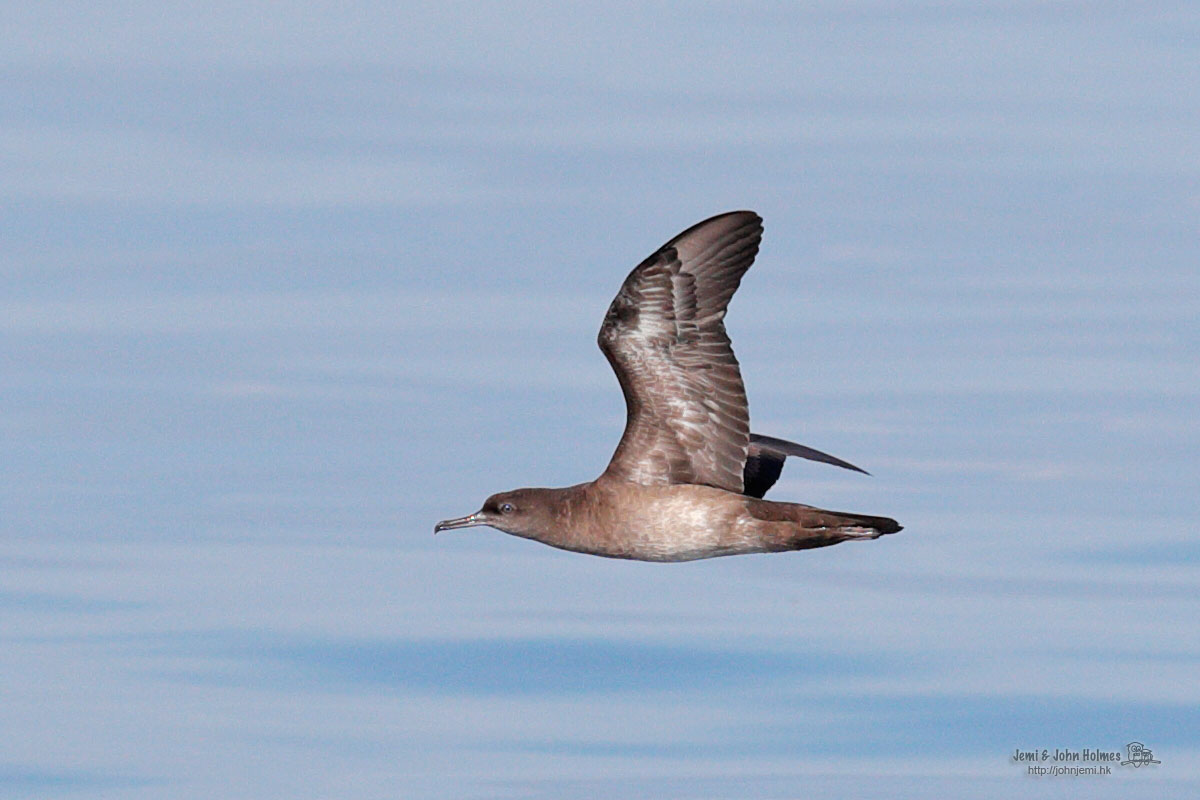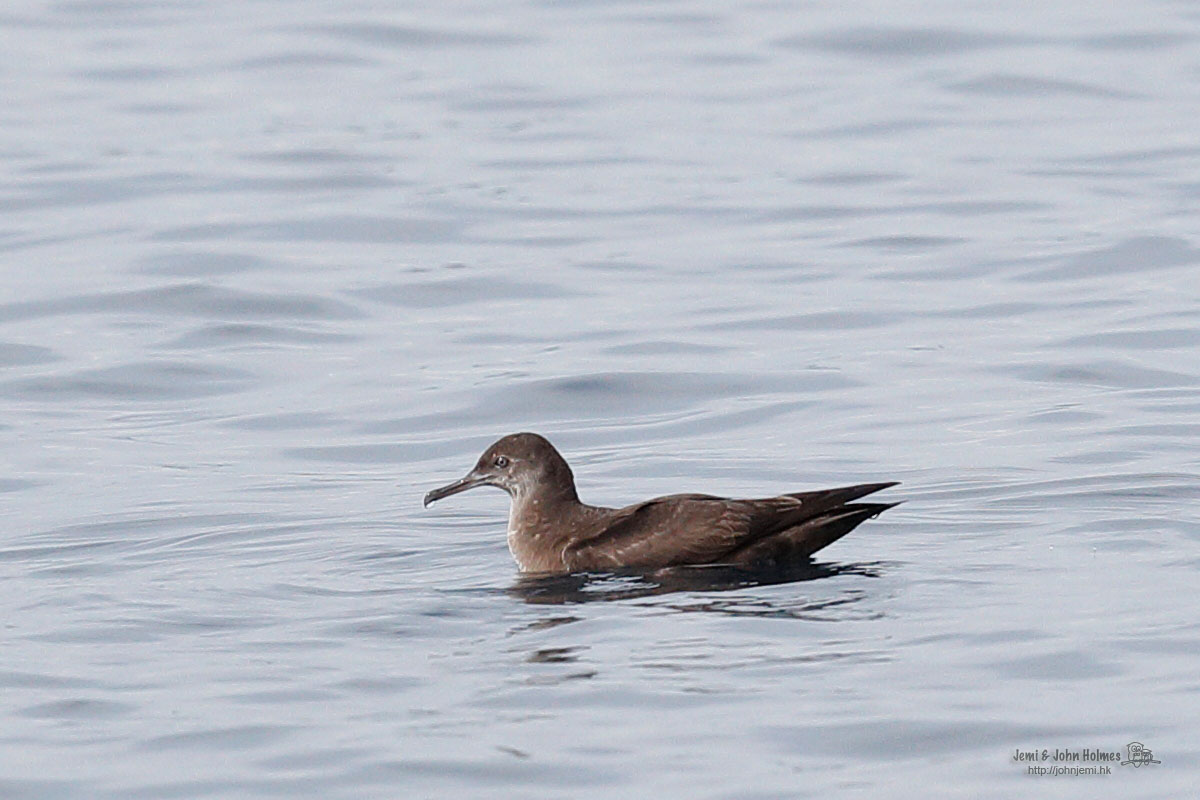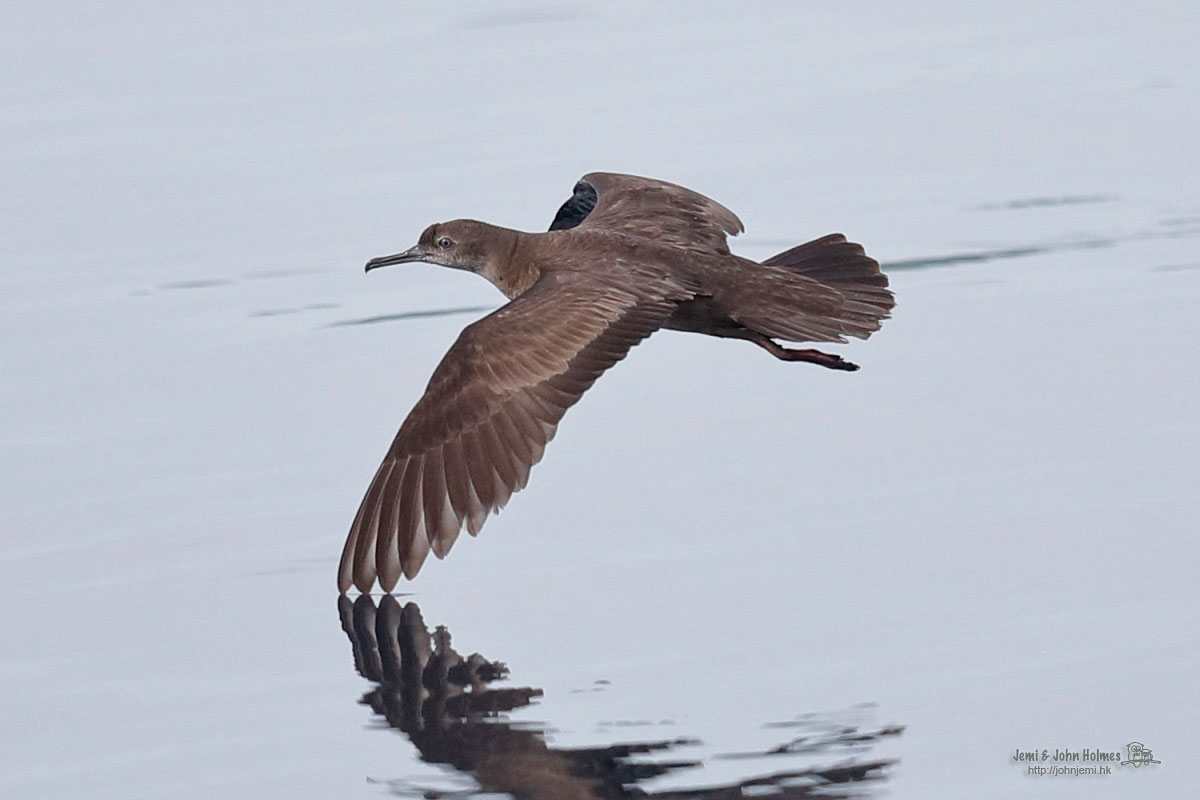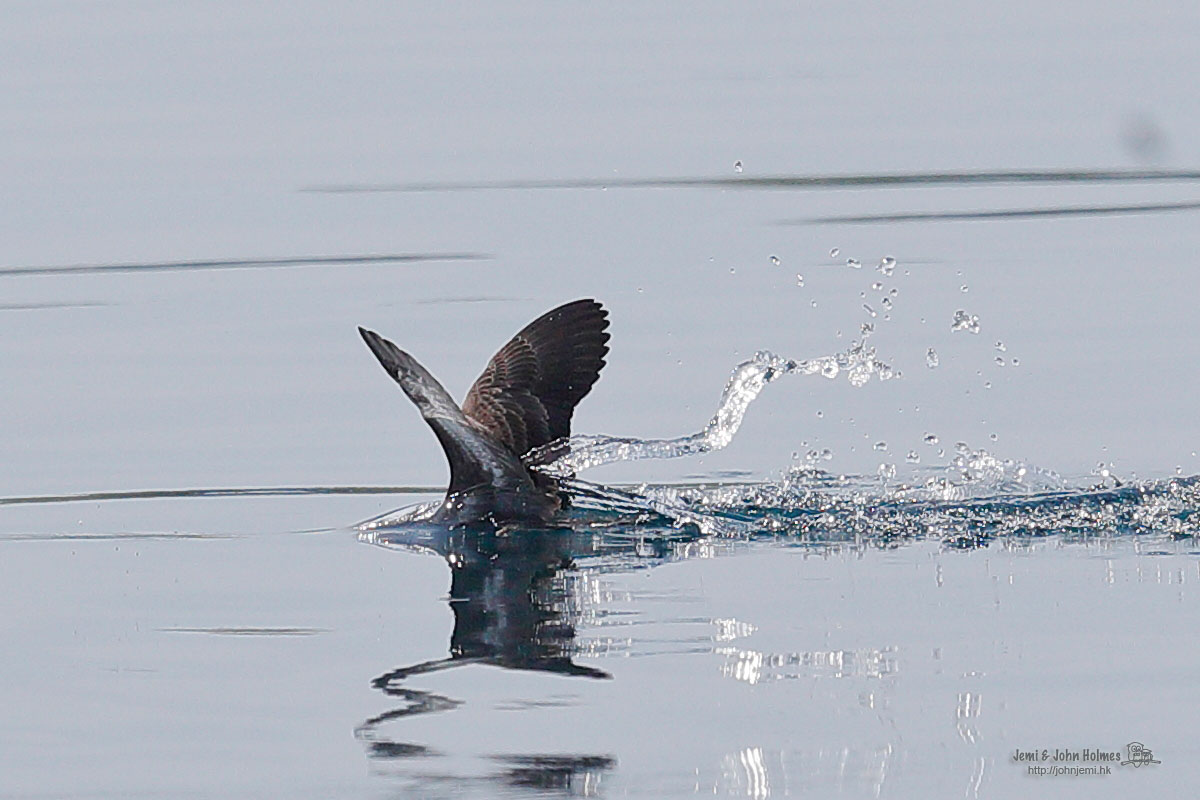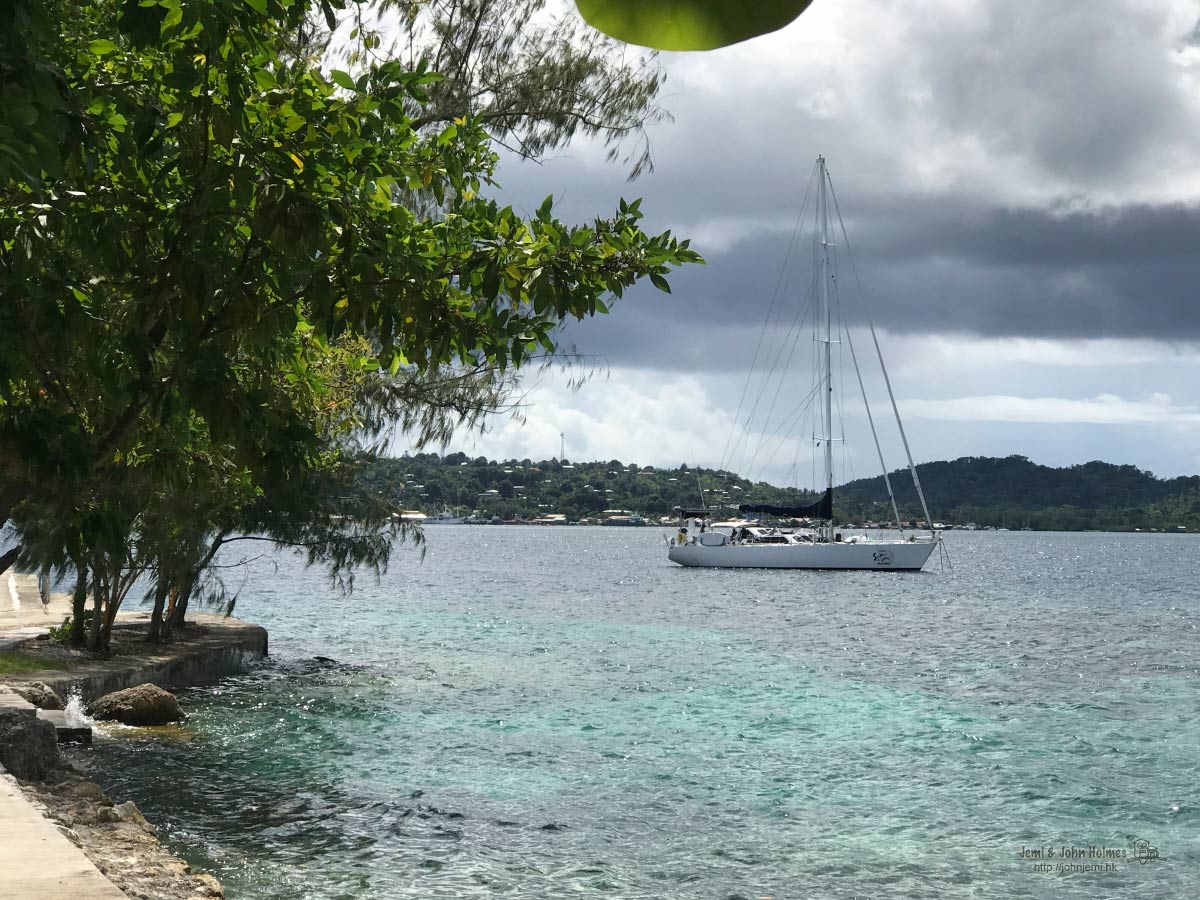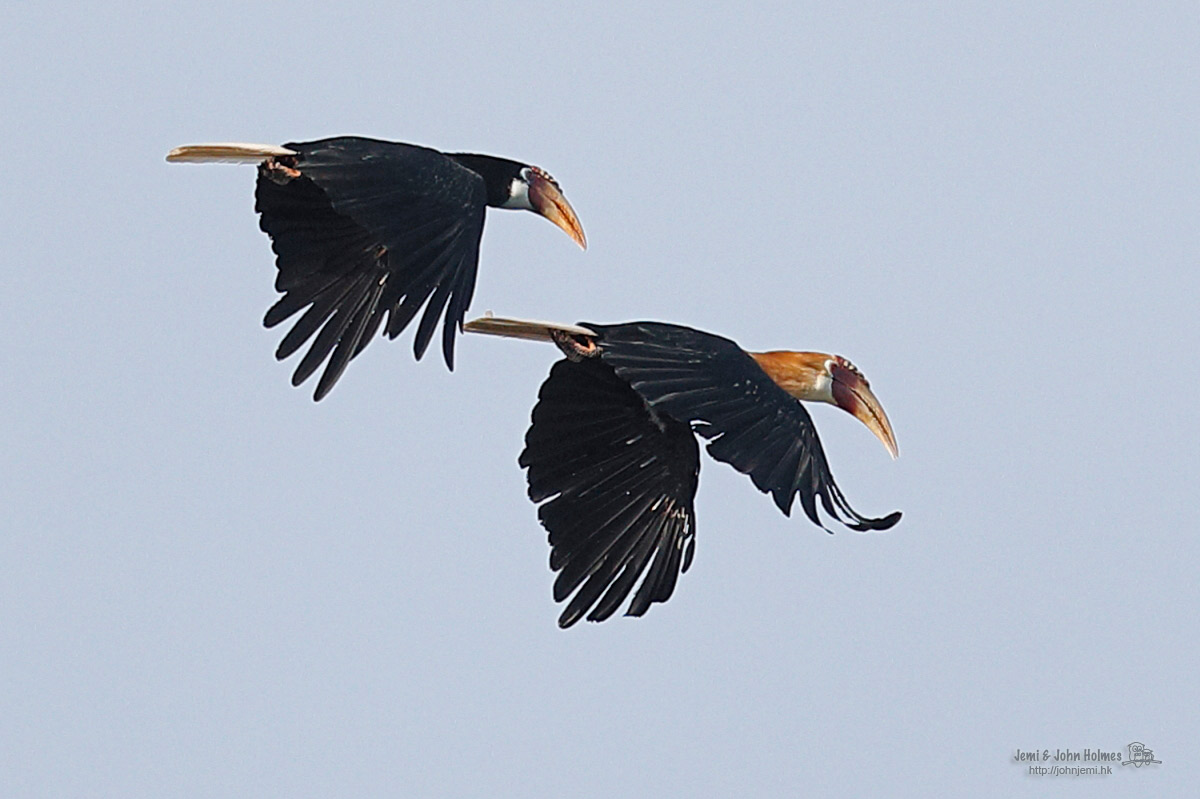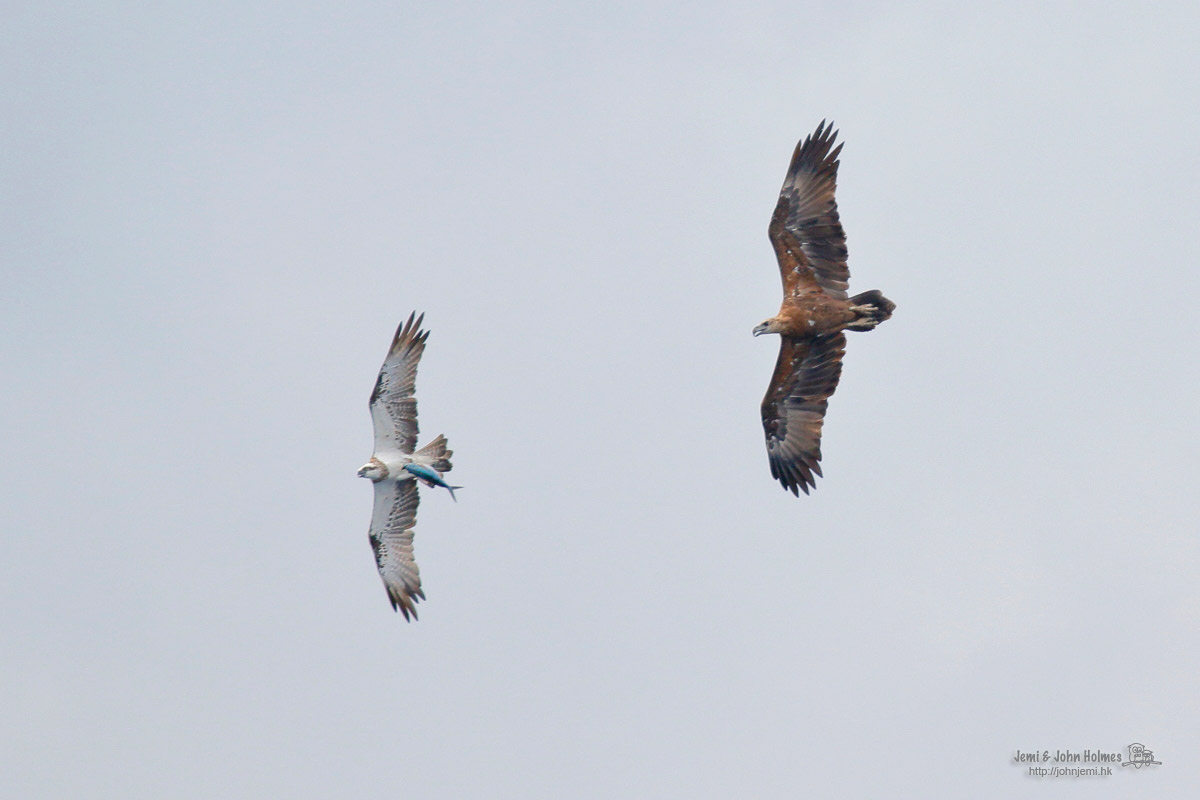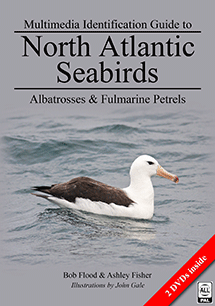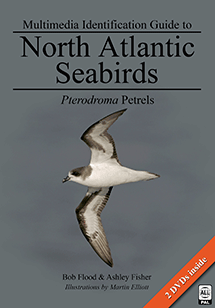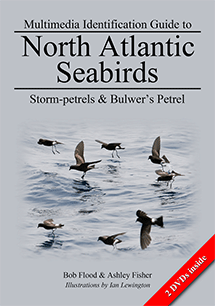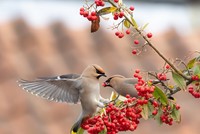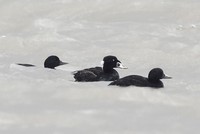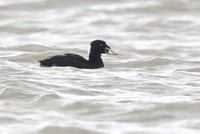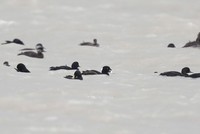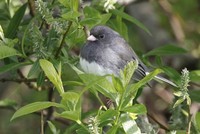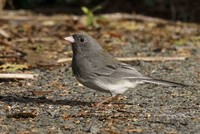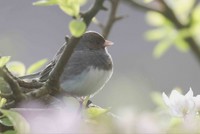In search of the little-known tubenoses of Melanesia
A pelagic expedition from Vanuatu to Papua New Guinea
Introduction
Melanesia holds the breeding grounds of four of the most sought after and little-known tubenoses: Beck’s Petrel, Magnificent Petrel, Vanuatu Petrel, and Heinroth’s Shearwater. In addition, there is a mystery all-dark Psuedobulweria which has been seen just a handful of times in the region and may be an undescribed taxon. All serious seabirders must at some point spend time in the region.
I joined the Western Pacific Odyssey in April 2008 and saw most seabirds of the region as we steamed through. That’s OK, but when it comes to speciality tubenoses I NEED TO GET INTIMATE. So, I teamed up with the usual suspects Mike Danzenbaker, Angus Wilson and Kirk Zufelt (the ‘High Rollers’) and planned a four-week expedition sailing from Vanuatu to New Ireland, Papua New Guinea, via the Solomon Islands. We were joined by the delightful couple John and Jemi Holmes.
The expedition dates were 6–31 January 2017. We chartered the 18 m yacht Sauvage that specialises in expeditions to remote locations. We sailed from Vanuatu to New Ireland, Papua New Guinea, via the Banks Islands, Vanuatu, and Kolombangara Island, Solomon Islands, returning to Kolombangara Island. Choice of the dates and the route were based on recently published information and personal experience, and promised a fair chance of encountering the target taxa.
The team met up at Port Vila, Efate, Vanuatu on 4 January. Port Vila is a splendid place with friendly people and a market with delicious fruits and coconuts. We found a good restaurant too. The couple of wind-down days after international travel were much appreciated and we enjoyed the last few hours of air conditioning before the long and sticky-hot journey.
Potential challenges included typhoon season January–April (we had contingencies) and the seasonal prevailing northwesterly winds. As it turned out, it was the calm conditions throughout the expedition that posed problems; slowing our passage, becalming the petrels, and significantly reducing the effectiveness of chumming. Nevertheless, during daylight hours, while motoring or sailing, we operated a fish-oil drip and, at key locations, towed onion bags full of semi-decomposed sardines. We attempted drifting and chumming several times, setting up an oil slick and adding fish products, but this was largely unsuccessful because of the complete lack of wind. Wind disperses the smell of the chum and increases the efficiency of tubenose flight.
Leg 1 Port Vila to Banks Islands, North Vanuatu
6 January: We departed the morning of 6 January and as we headed to the ocean great excitement left me tingling all over. Not surprising really. In the coming four weeks we planned to visit suspected and known breeding sites of the target taxa, explore other areas, and maybe, just maybe, encounter the mystery all-dark petrel – nothing less than a seabirder’s dream.
Two White-tailed Tropicbirds and a Great-crested Tern got the cameras firing as we left the moorings, and at sea we soon encountered dark-morph Wedge-tailed Shearwaters and Tropical Shearwaters. Boobies were with us throughout the trip and this afternoon we saw numbers of Red-footed plus a Brown. We were surprised to see at least 20 Pomarine Jaegers but there was only one Parasitic Jaeger. Lunch and dinner were served on deck, as they were throughout the trip, and so we were able to keep one eye on the ocean throughout daylight hours.
The windless daytime temperature of 34 C turned the cabins into ovens. With just a small cooling fan, it was unbearable, so I slept all 26 nights on deck. I lay on a sunbed mattress and benefited from a light breeze as we moved ahead, though the temperature held up at 28 C. Looking-up at the stars was mind boggling given no light pollution. An occasional shooting star coming from deep space reminded me that we reside on a planet in a solar system, with 200 billion other stars making up our galaxy, and 200 billion known galaxies, and that’s just the known/visible universe. What lies beyond – maybe infinity? Every night I gazed at the stars thinking these thoughts as I drifted off to sleep (and no, I hadn’t taken any space smarties).
Get-up time was 6.30 am. John and I became early morning tea buddies, with tea the essential ingredient to be compos mentis. The smell of pancakes and toast accelerated the wake-up process. After excessive numbers of pancakes dripping in syrup and several rounds of toast, I was set and ready to seabird.
7 January: We were en route to Vanua Lava in the Banks Islands, North Vanuatu, and expected to arrive some time next day. The newly described taxon Magnificent Petrel almost certainly breeds there. Vanuatu Petrel, rediscovered in 1983, is known to breed there.
Our sightings of Magnificent Petrel were highly localised and all but one were logged south of Vanua Lava, Banks Islands, where the birds apparently breed: 7 January – Forty-two birds over the deep waters enclosed by Malekula and Espiritu Santo Islands to the west, and Pentecost and Maewo Islands to the east. 8 January – Four birds during the morning approach to Vanua Lava. 9 January – One close-by Vanua Lava late evening.
The first Magnificent Petrel went down as a Bulwer’s Petrel, which may surprise you, but it is a genuine confusion species. This reminded me of WPO 2008 when a dark-morph Collared Petrel (maybe a Magnificent) was called as a Bulweria by another experienced seabirder. The literature also notes this trap, so be warned. With closer views we soon realised that our birds were all Magnificent Petrel. We encountered many Magnificents sat on the sea due to a total lack of wind; not ideal for observing and photographing them. So, we set up a chum slick, but in truth without a breeze no-one expected it to work, and it didn’t.
The taxon lived up to its name – the birds looked simply magnificent. They are largely dark grey. A whitish patch runs from the lower forecrown across the lores and over the chin and throat. The underwing-coverts are dark with two variable whitish patches; one triangular, covering the axillaries and adjoining coverts of the inner arm, the other covering some, to many of the larger coverts in the arms and hands. The special ingredient, of course, is the genus Pterodroma! Personally, I would have named the taxon COSMIC Petrel.
For cetacean lovers, we saw a group of five Blainville’s Beaked Whale.
All too soon, day turned to night. We continued to motor north passing several active volcanoes and one of them with a red-hot cloud of volcanic dust lit up part of the sky. The red glow beneath the star-studded sky gave an odd sense of a primordial world. The experience was unique.
8–10 January: The skipper Didier told us over breakfast that we should arrive at Vanua Lava about noon. We soon saw our first Vanuatu Petrel and had notched up six by noon. There were just four Cosmic Petrels and these were the last ones seen on the expedition, apart from a singleton offshore Vanua Lava one evening. There was also a smattering of other seabirds, including 25 frigatebirds, but the next few days at Vanua Lava were all about searching for, observing, and photographing Vanuatu Petrels.
We arrived at Vanua Lava about noon and departed after dark on 10 January. Meantime, late afternoon and evening were spent northeast of Vanua Lava at the ‘hot spot’ for returning Vanuatu Petrels identified by Hadoram Shirihai. At night we drifted off the northeastern shore of Vanua Lava. Morning and the middle of the day were mainly spent looking for or chasing feeding frenzies of seabirds (frigatebirds, boobies, noddies, terns) that often included a small number of Vanuatu Petrels. Groups of 2–6 Vanuatu Petrels were found loafing on the sea in the late afternoon and evening northeast of Vanua Lava, between the Reef Islands and Mota Lava. Birds were observed landing, swimming toward each other, and preening.
Our complete set of sightings follow: 8 January – Six at sea while approaching Vanua Lava, five in the afternoon with feeding frenzies, 20 at the ‘hot spot’ in the evening, two or more Vanuatu Petrels calling on and off 1 km offshore 10.00–11.00 pm (the toooooo-wit call, p. 60). 9 January – Six in the afternoon with feeding frenzies, 10 at the ‘hot spot’ in the evening. 10 January – Three in the afternoon with feeding frenzies, but none at the ‘hot spot’ in the evening before departure at dark. 11 January – Five at sea, mainly with feeding frenzies.
We had plenty of excellent views of birds in feeding frenzies and at the ‘hot spot.’ The best encounter happened by chance when we stopped to drift. Jemi spotted two birds sat on the sea down wind. It was clear that we would drift toward them and so everyone sat down and kept quiet. This worked a treat and we drifted to within ten metres of the birds. Yup, that’s 10 metres away from the rare and little-known Vanuatu Petrel. Views through binoculars were exceptional. I could see the details of every feather, study tracts of feathers, and look at the structure of the bill. At their closest we were eye to eye.
The only surprise at Vanua Lava was a Christmas Shearwater drawn to one of the feeding frenzies, and we saw a single Tahiti Petrel among the returning Vanuatu Petrels.
Leg 2 Banks Islands to Western Province, Solomon Islands
11–17 January: Leaving the Banks Islands was a bit of a wrench, but we still had about 2,000 km to travel. We made the passage to the Western Province, Solomon Islands, in five days, arriving late on 15 January. The first Fairy, Bridled and Grey-backed Terns were logged en route and Sooty Terns were in the hundreds, with good numbers of juveniles. White-tailed Tropicbirds were seen most days and the ratio of Black Noddy to Brown Noddy reversed, with Black Noddy by far the more numerous by the time we arrived in the Western Province. A few Long-tailed Jaegers put in an appearance. Wedge-tailed Shearwaters were common and we saw two light morphs among the expected dark morphs. Small numbers of Tropical Shearwaters whizzed by and the first Streaked Shearwaters put in an appearance.
Of particular interest, there was a flurry of five white-rumped storm-petrels from 5 pm to dark on 12 January. None hung around. At least one appeared to have a deeply forked tail but the only bird photographed was a Madeiran and so we put the other four down as either/or because we weren’t certain. One more storm-petrel gave teasing views early next morning. These were the only storm-petrels seen on the expedition. The only Bulwer’s Petrel of the expedition flew casually by on 13 January.
Cetacean sightings were rather disappointing on this leg given the flat calm conditions, but included several distant whale blows and a few pods of Pantropical Spotted Dolphin. The highlight was a large group of Short-finned Pilot Whales as we approached the Western Province.
It took a day and a half to clear Solomon customs, purchase diesel fuel, and provision food for the long leg to New Ireland, Papua New Guinea. Anchored up by the islands provided an opportunity to land bird from the yacht and a decent number of land birds were seen by the end of the expedition.
The initial plan was to look for Heinroth’s Shearwater off nearby Ghizo and Kolonbangara Islands, in Vella Gulf, where in March 2013 Peter Harrison saw hundreds of birds including substantial flocks involving 25 or more birds. We motored through Blackett Strait and into Vella Gulf and in this time saw only three Heinroth’s. Although breeding chronology is unknown, we reckoned mid-January might be early in the breeding season of Heinroth’s and more of them might return over the next two weeks. Our flights departed Ghizo Island on 31 January and so we had to return to the Western Province after New Ireland. So, a decision was made to head on to New Ireland for Beck’s Petrel and return to the Western Province for the last five days of the trip, for Heinroth’s Shearwater.
Leg 3 Solomon Islands to New Ireland, Papua New Guinea
18–22 January: Another long stretch of ocean lay ahead of us. We left on the evening of 17 January and arrived at Silur Bay, New Ireland, at first light on 21 January. Sightings of two single Heinroth’s were made on 18 January near the Shortland Islands, with sightings of two more singles about 50 km east of northwest Bouganville Island.
The days heading north yielded good sightings of the commoner seabirds. Streaked Shearwater was more frequent, though always in small numbers. We were very surprised to encounter two first-winter Grey Phalaropes and are uncertain at the moment of the species’ status in the Solomon Sea. Just before dusk, the evening before arrival, a distant Beck’s/Tahiti pumped us up for the next day.
At first light on 20 January, at about 6.30 am, Sauvage was c. 15 km east of our furthest expedition point, Silur Bay, southeastern New Ireland. Silur Bay is the location discovered by Jeremy Bird (Birdlife International) where large numbers of Beck’s Petrel were found. They may breed nearby, high in the Hans Meyer Range. Our first Beck’s Petrel was seen c. 10 km offshore as we approached Silur Bay. The majority of sightings over the next few days were within 5 km of shore, mainly within 2 km of shore, with some very close indeed to shore. We did not detect fresh juveniles among the birds seen reasonably well but we did see a few birds in active primary moult. Sightings for 20–22 January follow:
20 January – In the vicinity of Silur Bay, 24 birds to 8.30 am flying north, 8 birds to 3.30 pm flying north/south and two birds sat in the bay, 12 birds to 4.00 pm flying south during a squall, 10 birds to 6.00 pm flying south, eight birds to dusk milling around the mouth of Silur Bay (none within the bay).
21 January – In the vicinity of Silur Bay, 18 birds to 8.30 am flying north, 13 birds flying north/south to 3.30 pm and two sat in the bay, but none beyond 5 km in the direction of the Fini Islands to the east 11.30 am to 2.30 pm, 18 birds and a Tahiti Petrel to dusk, with the Beck’s Petrels milling around the mouth of Silur Bay.
22 January – In the vicinity of Silur Bay, no birds to 8.30 am, three birds to 12.30 pm while motoring to Cape St George, 12 birds to dusk as far as c. 40 km south-southeast of Cape St George, most within the first 15 km.
Silur Bay was rich in cetaceans. We saw at least 20 Sperm Whales with 14 in one group. We encountered several groups of Short-finned Pilot Whale with over 40 on one occasion. Dolphins included Risso’s and Pantropical Spotted. Two Red-necked Phalaropes frequented waters near to cetaceans.
On 21 January 2017, at about 3.10 pm, something rather exceptional happened. We saw one! Yup, that’s right, we saw an all-dark Psuedobulweria about 1 km offshore at the northern end of Silur Bay. The bird was initially spotted by RF flying up the wake. Flight was strong and purposeful as it progressed toward the stern, to within 150 m, presumably attracted by dripping fish oil and sardines in tow. It then peeled off and flew in a more leisurely fashion to about 0.5 km from shore, headed back and crossed the wake at about 200 m, then flew away following the coastline northward. The bird was in view for about two minutes and was also seen by AW, KZ and MD. Photographs were hurriedly taken as the bird crossed the wake and then flew off north, but the images of the bird were small, out of focus, and of little help.
Compared to Beck’s Petrel, our bird was smaller (perhaps 10%), with a more heavily built head and body, an apparently heavier bill (i.e. we could see it at range, though not the details of its structure), and the wings did not appear quite as pointed. The tail shape was not seen though its relative length was probably shorter than Beck’s Petrel. The plumage aspect was overall blackish, brownish-black in the best light, apparently with uniform dark upperwings. The flight actions of our bird were somewhat like a Pterodroma. Flight was consistently strong and steady, with fairly stiff wingbeats, and the bird climbed to over 8 m on several occasions.
Our sighting follows those of Hadoram Shirihai: 2003 – One on 14 August, off Kimbe Bay, northern central New Britain. 2007 – One on 31 July, between the southern end of New Ireland and the Feni Islands, and one on 7 August, off Cape Lambert, northeastern end of New Britain. The main characteristics of our bird match Hadoram’s description of these petrels. There are two unsubstantiated claims of unidentified dark petrels from the same general area (April 2007 and 2008).
Are these birds Fiji Petrel? Might they be an as yet undescribed taxon? This is one of the great mysteries thrown up by modern-day seabirding in the Pacific. Whatever, it was a tremendous thrill to watch our bird and what a strange feeling as it flew away taking its secrets with it.
Leg 4 Return to the Solomon Islands
22–24 January: On 22 January, after lunch and with great reluctance, we set off from Cape St George for the long return to the Solomons. That afternoon was the only time that we had any notable wind, allowing us to sail. By dusk, though, the wind had dropped and a thunderstorm brewed. In fact, there were some spectacular night-time thunder and lightning storms during the trip, some quite violent, most with light shows to beat any New Year firework display. My star-studded night was then replaced by a show that would please any storm chaser. Didier reassured us that we were totally safe, though a lightning strike might knock out the electrics. I didn’t bother to ask about the implications of that. A water spout thankfully didn’t trouble us.
In the windy and choppy conditions we finally got to see what Beck’s Petrels are ‘made of.’ They are superb fliers ‘up there’ with Pterodromas with flight trajectory like a marble within a rolling hollow glass orb. I was juiced watching them. Then, out of the blue, another all-dark petrel smaller than Beck’s Petrel arced past some way off the stern and was gone. As if I needed amping-up any further! It probably was another all-dark Psuedobulweria. I so much wanted to turn back and spend time trying to nail this mystery bird, but our schedule did not permit it. Guess I’ll be going back to the Bismark archipelago in the not too distant future.
The following four days felt rather tame. Common seabirds kept the engines ticking over. Identifying three Tahiti Petrels on 23 January was straight forward following our experience with Beck’s Petrel in the forerunning days. Surprisingly, we didn’t see any Heinroth’s Shearwaters on this leg of the expedition.
25–31 January: The rest of the expedition concentrated on observing and photographing Heinroth’s Shearwater in Blackett Strait, between Kolombangara Island and Kohinggo Island. We crossed Vella Gulf several times but saw very few Heinroth’s. Having five days to get to grips with this little-known and scarcely seen shearwater was something of a treat. We spent the nights anchored in a small creek where we were visited by several locals selling vegetables and other wares. They were all very friendly and it is hard to believe that their grandparents will have been practicing head-hunters.
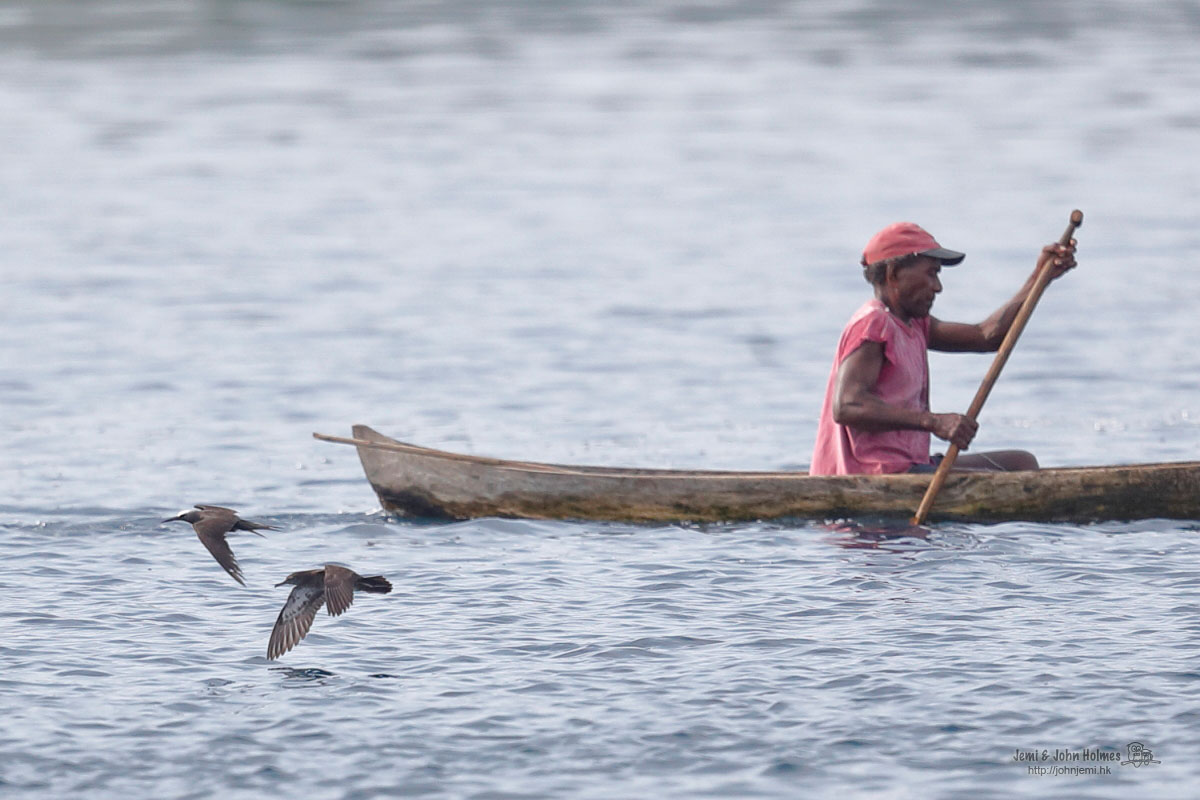
We found small groups of Heinroth’s Shearwater in Blackett Strait: January 25 – four in the evening. January 26 – Between 7.30–9.30 am 6–8 birds, 3.30–5.45 pm 10–12 birds, c. 16 birds in total. January 27 – Between 7.30–9.30 am 6–8 birds, not searched for in the afternoon. January 28 – Between 7.30–9.30 am 6–8 birds, 3.30–5.30 pm 8–10 birds, c. 14 birds in total. January 29 – Between 7.30–10.30 am 16–18 birds, not searched for in the afternoon. January 30 – Between 7.30–11.30 am 6–8 birds, none in the afternoon (no noddies or terns either). January 31 – Between 7.30–11.30 am 6–8 birds, disembarked Sauvage in the afternoon.
There was some turnover of birds in the Blackett Strait. For example, on 26 January the majority of birds were pale morph, whereas on January 28 the majority of birds were dark morph. Some individuals recognisable by a distinct marking, or by wear or moult in the primaries, were seen on one day only. We estimate that we found a total of 30-50 birds.
In Blackett Strait, we found Heinroth’s Shearwaters in strong association with sizeable mixed feeding and rafting flocks of noddies and terns. Local fishermen also headed to the frenzies. The flocks comprised mainly Black Noddy and Common Tern (longipennis), with smaller numbers of Brown Noddy and Black-napped Tern (occasionally frigatebirds). Flocks went into feeding frenzies over feeding tuna that pushed bait fish to the surface. Fish activity usually occurred from early to mid-morning, and mid-afternoon to late evening.
We had session after session tracking-down and studying or photographing this odd-looking shearwater. It is polymorphic. The irides are pale blue to creamy. The bill is very long and narrow. I fell in love with this species and considered changing my name to Bob Love Shearwater, but that’s not original (is it Debi Love).
The trip drew to a close in spectacular fashion. We witnessed high drama in Blackett Strait when an immature White-bellied Sea-eagle made a failed attempt to predate a lone Heinroth’s Shearwater sat on the sea. The shearwater avoided capture at the last moment by diving. We were surprised to see this species of sea-eagle, since Sanford’s Sea-eagle replaces it in the Solomons, but the tail was largely whitish and not all dark, which is a diagnostic feature of Sanford’s, and the rest of the plumage aspect better matched White-bellied.
And so, finally, on the afternoon of 31 January, we disembarked Sauvage and walked the 50 m to the airport. Actually, let me qualify that, the airport comprised no more than a very small flattened atoll with a strip for landing and taking off and a ‘bus shelter’ for check in. Refreshments were available from a small plastic cool box. Weight restrictions were largely ignored. When the Twin Otter landed the pilot got out and rolled three drums of fuel to the plane and did the refueling. I don’t remember any safety briefing. It was a rather different experience to flying by Twin Otter to Scilly.
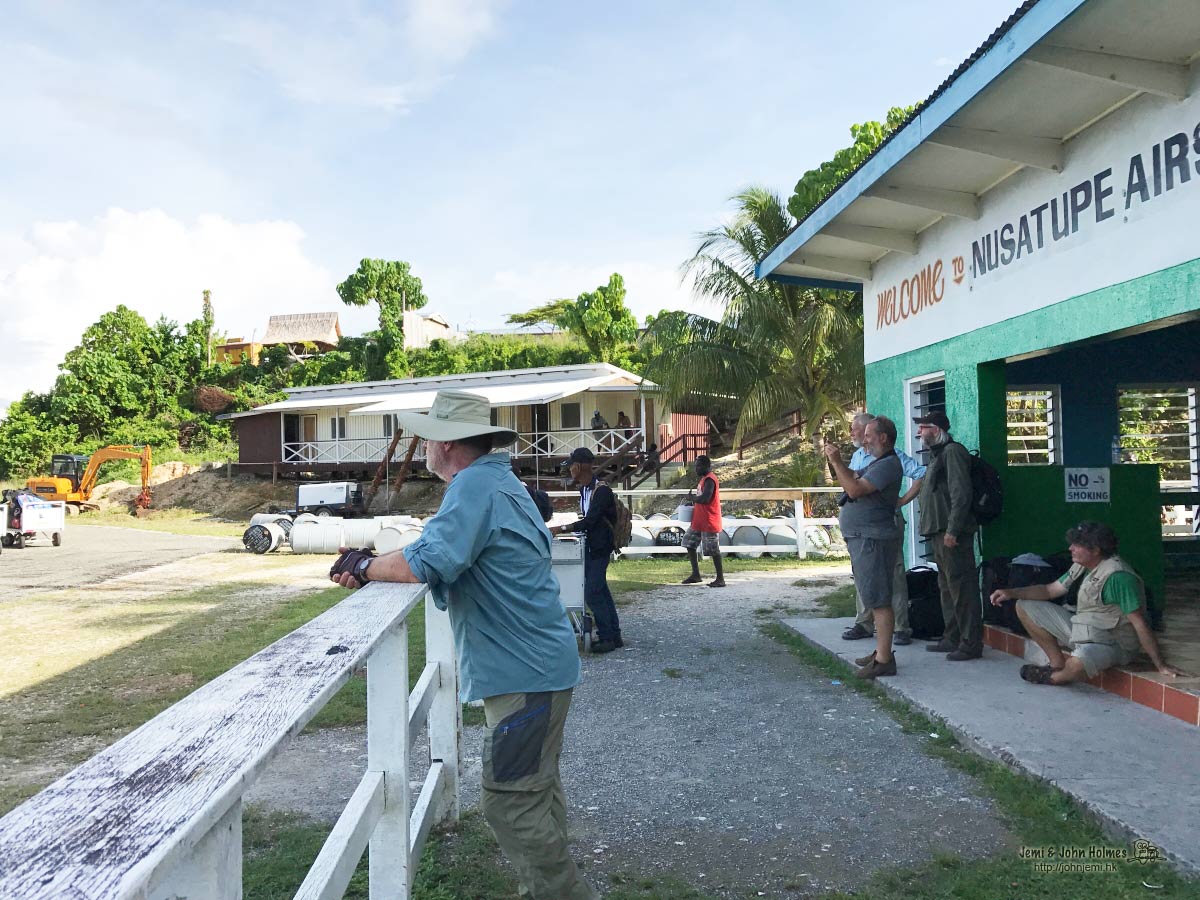
Bob Flood
www.scillypelagics.com
3 March 2017
Acknowledgements
Many thanks to Cloe, Didier & Sophie Wattrelot for a safe passage and first-class service on their yacht Sauvage. Peter Harrison and Hadoram Shirihai provided useful information about localities. Lastly, I warmly acknowledge my fellow team members Mike Danzenbaker, John and Jemi Holmes, Angus Wilson, and Kirk Zufelt for their companionship and sharing of photographs.
Postscript
We saw a good number of landbirds in particular in the Western Province at our moorings.
Share this story
Write for Rare Bird Alert
Do you have a birding story you would like to share? From foreign birding trips to your local patch we would love to hear from you.
All our articles are free for anyone to view and we include them in our weekly newsletter which goes out to thousands of birders every Wednesday. We also share them on our Twitter and Facebook pages, making sure your article will get read by as many people as possible.
If you would like to write an article please for us please get in touch with your ideas, thank you.
The RBA team
